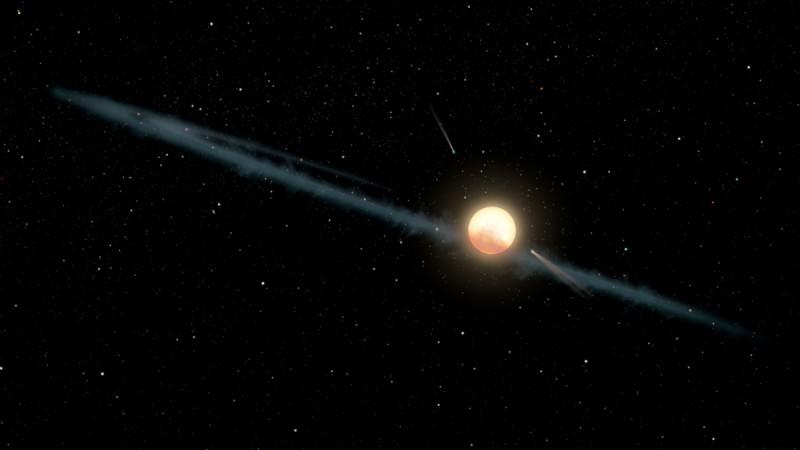
More than 1,300 light-years away is a mysterious star known as Tabby's Star that dims and brightens in an unusual manner. This bizarre phenomenon had given rise to the theory that it happens because the cosmic body is being orbited by an alien megastructure.
However, scientists in a new study have now debunked the theory and said there is no alien megastructure orbiting the cosmic body, which is 50 percent bigger than our sun and 1,000 degrees hotter.
"Dust is most likely the reason why the star's light appears to dim and brighten," study leader Tabetha Boyajian, an astronomer at Louisiana State University, said in a statement. "The new data shows that different colors of light are being blocked at different intensities. Therefore, whatever is passing between us and the star is not opaque, as would be expected from a planet or alien megastructure."
Tabby's Star, which is also called as KIC 8462852, has been in the news since the time it was first observed. Boyajian had been researching the star and even reported that it dimmed dramatically in the past few years and once by a whopping 22 percent, Space.com reported.
Boyajian and her team observed the star from March 2016 to December 2017 with the help of multiple ground-based telescopes. They observed and examined the dimming events four times in 2017. And the results suggest that the star is being orbited by the cloud of dust "that completes one lap every 700 Earth days," according to Space.com.
"I am so appreciative of all of the people who have contributed to this in the past year — the citizen scientists and professional astronomers," Boyajian said. "It's quite humbling to have all of these people contributing in various ways to help figure it out."
Study co-author Jason Wright, an astronomer at Pennsylvania State University, said in the statement: "This latest research rules out alien megastructures, but it raises the probability of other phenomena being behind the dimming."
He added: "There are models involving circumstellar material — like exocomets, which were Boyajian's team's original hypothesis — which seem to be consistent with the data we have."
However, he also said: "Some astronomers favour the idea that nothing is blocking the star — that it just gets dimmer on its own — and this also is consistent with this summer's data."

















